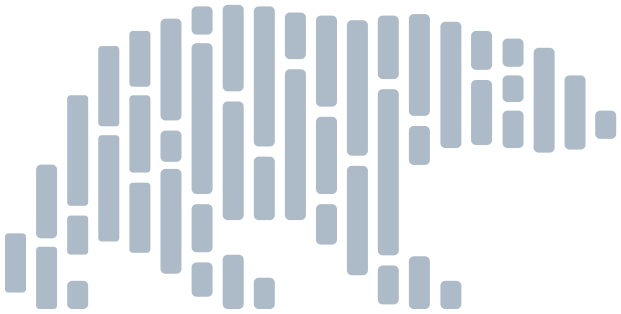polars.DataFrame.partition_by#
- DataFrame.partition_by(
- by: ColumnNameOrSelector | Sequence[ColumnNameOrSelector],
- *more_by: ColumnNameOrSelector,
- maintain_order: bool = True,
- include_key: bool = True,
- as_dict: bool = False,
Group by the given columns and return the groups as separate dataframes.
- Parameters:
- by
Column name(s) or selector(s) to group by.
- *more_by
Additional names of columns to group by, specified as positional arguments.
- maintain_order
Ensure that the order of the groups is consistent with the input data. This is slower than a default partition by operation.
- include_key
Include the columns used to partition the DataFrame in the output.
- as_dict
Return a dictionary instead of a list. The dictionary keys are tuples of the distinct group values that identify each group.
Examples
Pass a single column name to partition by that column.
>>> df = pl.DataFrame( ... { ... "a": ["a", "b", "a", "b", "c"], ... "b": [1, 2, 1, 3, 3], ... "c": [5, 4, 3, 2, 1], ... } ... ) >>> df.partition_by("a") [shape: (2, 3) ┌─────┬─────┬─────┐ │ a ┆ b ┆ c │ │ --- ┆ --- ┆ --- │ │ str ┆ i64 ┆ i64 │ ╞═════╪═════╪═════╡ │ a ┆ 1 ┆ 5 │ │ a ┆ 1 ┆ 3 │ └─────┴─────┴─────┘, shape: (2, 3) ┌─────┬─────┬─────┐ │ a ┆ b ┆ c │ │ --- ┆ --- ┆ --- │ │ str ┆ i64 ┆ i64 │ ╞═════╪═════╪═════╡ │ b ┆ 2 ┆ 4 │ │ b ┆ 3 ┆ 2 │ └─────┴─────┴─────┘, shape: (1, 3) ┌─────┬─────┬─────┐ │ a ┆ b ┆ c │ │ --- ┆ --- ┆ --- │ │ str ┆ i64 ┆ i64 │ ╞═════╪═════╪═════╡ │ c ┆ 3 ┆ 1 │ └─────┴─────┴─────┘]
Partition by multiple columns by either passing a list of column names, or by specifying each column name as a positional argument.
>>> df.partition_by("a", "b") [shape: (2, 3) ┌─────┬─────┬─────┐ │ a ┆ b ┆ c │ │ --- ┆ --- ┆ --- │ │ str ┆ i64 ┆ i64 │ ╞═════╪═════╪═════╡ │ a ┆ 1 ┆ 5 │ │ a ┆ 1 ┆ 3 │ └─────┴─────┴─────┘, shape: (1, 3) ┌─────┬─────┬─────┐ │ a ┆ b ┆ c │ │ --- ┆ --- ┆ --- │ │ str ┆ i64 ┆ i64 │ ╞═════╪═════╪═════╡ │ b ┆ 2 ┆ 4 │ └─────┴─────┴─────┘, shape: (1, 3) ┌─────┬─────┬─────┐ │ a ┆ b ┆ c │ │ --- ┆ --- ┆ --- │ │ str ┆ i64 ┆ i64 │ ╞═════╪═════╪═════╡ │ b ┆ 3 ┆ 2 │ └─────┴─────┴─────┘, shape: (1, 3) ┌─────┬─────┬─────┐ │ a ┆ b ┆ c │ │ --- ┆ --- ┆ --- │ │ str ┆ i64 ┆ i64 │ ╞═════╪═════╪═════╡ │ c ┆ 3 ┆ 1 │ └─────┴─────┴─────┘]
Return the partitions as a dictionary by specifying
as_dict=True.>>> import polars.selectors as cs >>> df.partition_by(cs.string(), as_dict=True) {('a',): shape: (2, 3) ┌─────┬─────┬─────┐ │ a ┆ b ┆ c │ │ --- ┆ --- ┆ --- │ │ str ┆ i64 ┆ i64 │ ╞═════╪═════╪═════╡ │ a ┆ 1 ┆ 5 │ │ a ┆ 1 ┆ 3 │ └─────┴─────┴─────┘, ('b',): shape: (2, 3) ┌─────┬─────┬─────┐ │ a ┆ b ┆ c │ │ --- ┆ --- ┆ --- │ │ str ┆ i64 ┆ i64 │ ╞═════╪═════╪═════╡ │ b ┆ 2 ┆ 4 │ │ b ┆ 3 ┆ 2 │ └─────┴─────┴─────┘, ('c',): shape: (1, 3) ┌─────┬─────┬─────┐ │ a ┆ b ┆ c │ │ --- ┆ --- ┆ --- │ │ str ┆ i64 ┆ i64 │ ╞═════╪═════╪═════╡ │ c ┆ 3 ┆ 1 │ └─────┴─────┴─────┘}

